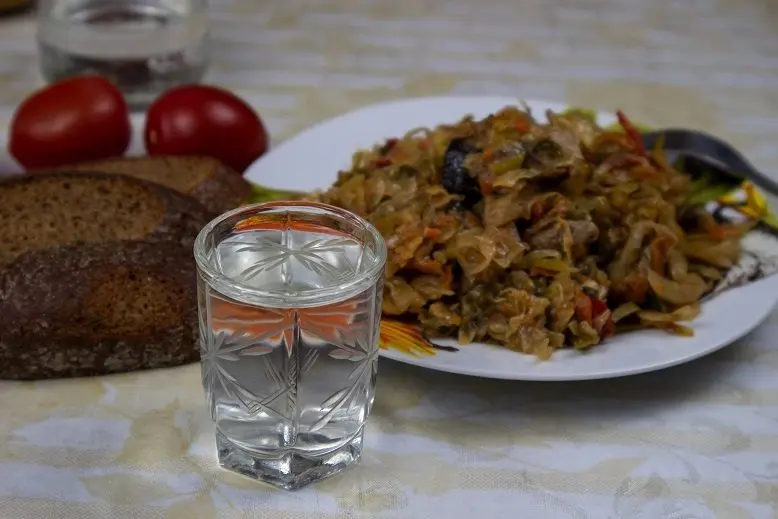Contents
It takes much more time and effort to make moonshine from rye than to make regular sugar distillate. But the final result is worth the effort – the drink turns out to be fragrant, with distinct bready notes and a light but pleasant hardness in taste. Rye flour with non-fermented malt or grain capable of sprouting is suitable as a raw material for mash.
Theory
Yeast can convert only simple sugars into alcohol, which are almost absent in grain or flour, but there is a lot of starch in cereals. Suitable raw materials for fermentation can be obtained by breaking down starch into simple sugars under the influence of enzymes that are released during the germination of grain. The process is called “hot saccharification”, because it requires heating and observing clear temperature pauses. This is the classic method.
In fairness, I note that there is also “cold saccharification”, implemented by introducing artificial enzymes amylosubtilin and glucavamorin into starch-containing raw materials, which replace malt. But due to the inaccessibility of the necessary enzymes to most novice distillers and the deterioration of taste (my subjective opinion), we will not consider this method further.
Extracting sugar from starch in the traditional way requires malt, a sprouted grain that can be bought ready-made or made at home. There is no fundamental difference.
In addition to itself, 1 kg of malt can saccharify up to 5 kg of flour, but the more malt and less flour, the higher the chances that all the starch will be processed into sugar, therefore, the yield of rye moonshine will increase. If only grain is available and conditions allow, I advise you to germinate all of it completely or as much as possible.
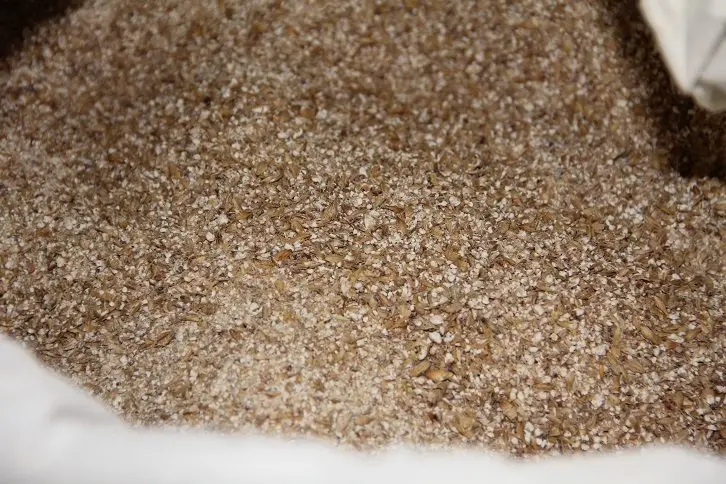
Features
From 1 kg of rye (flour, grain, malt) you can get up to 900 ml of moonshine with a strength of 40%. In practice, losses are up to 15-20%. To increase the yield, you can add beet sugar to rye mash: 1 kg gives 1,1-1,2 liters of forty percent distillate. The disadvantage is that part of the characteristic bread aroma is lost. In this case, I advise you to make mash without sugar.
Attention! Buy non-fermented malt in which the enzymes are still active. Fermented is used in baking bread and additional flavoring of drinks, but does not increase yield.
For saccharification of flour or cereals, not only rye malt is suitable, but also any other, for example, barley. Some moonshiners believe that starch is better processed with malt, the origin of which is different from the feedstock.
To enhance the flavor of the distillate, you can make moonshine from rye without yeast, using a pre-prepared sourdough from grain. The disadvantages of the method are that wild yeast does not always remain on the surface of the grains, so there is no guarantee that the sourdough will turn out, besides, “natural” mash ferments longer than on bakery dry or pressed yeast.
Ingredients:
- rye grain – 6 kg (or 1 kg of non-fermented malt and 5 kg of flour);
- water – 27 liters (approximately);
- sugar – 1 kg (optional);
- yeast – 12 grams dry or 60 grams pressed (optional).
Rye mash recipe
1. Preparation of sourdough
Required only for moonshine without yeast. The beginning of preparation is 5-7 days before setting the mash with flour (cereals) and malt, or simultaneously with the germination of grain for malt.
Technology: Pour 150 grams of rye with cold water, leave for 15 minutes, then remove floating particles and husks from the surface. Drain dirty water, refill with clean water, leave for 10 minutes and drain.
Spread the cleaned grain in an even layer of 2-3 cm in a plastic or metal container. Pour in water (should cover the rye by 1-2 cm). Loosely cover the container with a lid or bandage with gauze, then transfer to a dark place at room temperature.
After 1-2 days, the first sprouts should hatch. It’s time to add 50 grams of sugar to the future sourdough and mix with clean hands. If the mass came out too thick, pour in more water (a layer of 1-2 cm above the grain level). Leave for 5-7 days. When foam appears, a slight smell of fermentation, hissing, and until it is added to the mash, put the finished sourdough under a water seal to prevent souring.
Attention! If the sourdough didn’t work out (didn’t ferment), and homemade malt has already sprouted to the desired conditions, you will have to add ordinary yeast to the mash, you can’t wait for a new batch of sourdough.
2. Getting malt
It is often easier to buy ready-made malt and skip this step than to do the germination yourself, since you need to create the right conditions for the grains. For the preparation of malt, high-quality rye is suitable, which has lain for at least 2 months after harvest (preferably 5-6 months), but not older than 3 years.
Pour the rye in an even layer in a plastic bowl or enamel pan, pour water 3-5 cm above the grain level, after 8 hours remove the floating debris and replace the water. Repeat the procedure twice more. The total soaking time is 24 hours.
Drain the water completely, spread the rye in a layer of 5-10 cm (there should be a margin of at least 10-15 cm in height in the container, since the cereals will increase in volume). From above, it is desirable to cover the grain with slightly moistened gauze. Leave in a dark room with a temperature of 12-20°C and good ventilation. Stir the grain every 8-12 hours with clean hands so that carbon dioxide does not accumulate inside. Moisturize as needed, the rye should be damp but not wet.
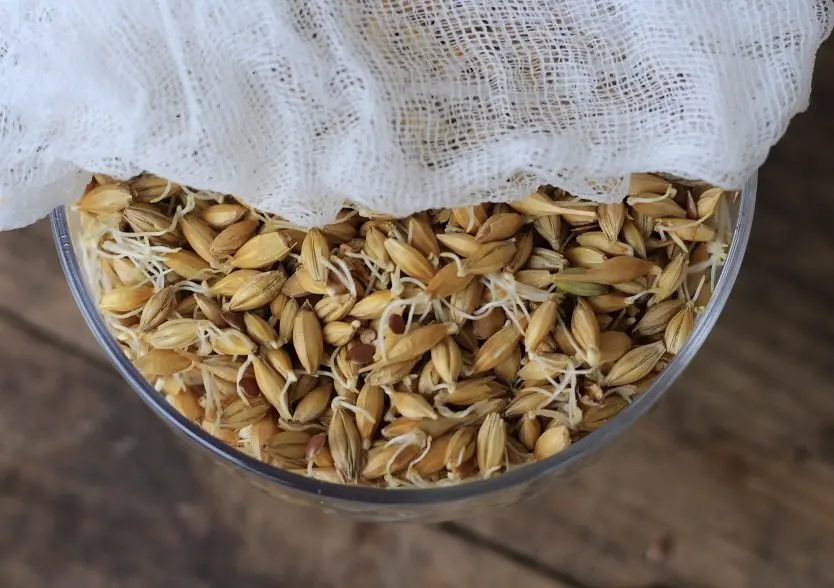
Germinate until sprouts are 5-7 mm long (usually 6-10 days). Ready grains have a bittersweet taste and a slight smell of cucumbers. The resulting “green malt” should be used within three days, while the activity of the enzymes is at its peak.
3. Saccharification
The most important stage, the success of which depends on the yield of rye moonshine.
Attention! Strictly observe the indicated temperature ranges using a thermometer (maximum error is 2-3 ° C), otherwise it will not work to break down starch into sugar.
Grind unsprouted rye to the state of finely ground cereals. Pour flour or cereals (the total amount is a maximum of 5 times more than malt) into a large cooking container – a pan or bucket. Pour in water preheated to 50 ° C (4 liters per 1 kg of flour) in a thin stream, stirring constantly so that lumps do not form.
Heat the mixture on the stove to 55-60°C, maintain the temperature for 15 minutes, then increase to 62-64°C, hold for 15 minutes, then bring the mixture to a boil and cook for 1,5-2 hours, stirring occasionally and watching so that the porridge does not burn near the bottom. The mass should become homogeneous. The coarser the grinding of the grain, the more time it takes to boil. Cool mixture to 65°C.
During cooling, grind malt (home-made green with sprouts or bought white), add water at a temperature of 26-28 ° C (3 liters per 1 kg of malt), mix until smooth. You will get a “malt milk”, which must be used within 24 hours.
Pour malt milk in a thin stream into the porridge cooled to 65 ° C, constantly stirring. Cover the container with a lid, then heat the porridge to 63 ° C. For the next 120 minutes, maintain the temperature in the range of 55-65°C, stirring the contents of the pot (bucket) every 20 minutes. It is very important not to overheat above 70 degrees, otherwise the enzymes will die, and saccharification will stop without the possibility of recovery. At the end of the process, the wort should be sweet.
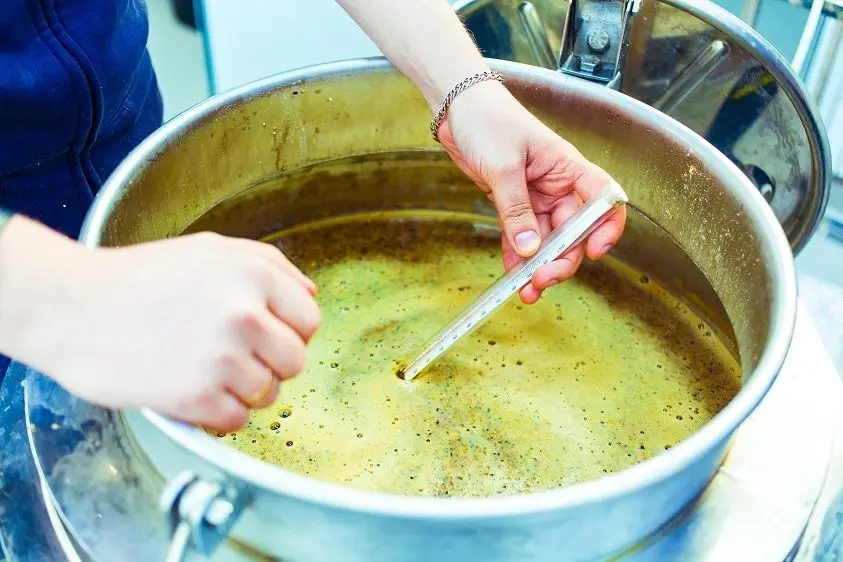
When making rye mash from pure malt, it is enough to dilute the malt with water in a ratio of 1:4, heat to 63°C, then maintain the temperature at 55-65°C for 2 hours, avoiding burning and stirring every 20-30 minutes.
4. Fermentation
Cool the must as quickly as possible to 28°C to minimize the risk of infection with pathogenic bacteria. You can’t wait until the porridge itself cools down, the easiest option is to lower the pan into a bath of cold water or ice.
Pour the cooled wort into a fermentation tank. If desired, add sugar and water (4 liters for each kilogram of sugar). Add yeast diluted according to the instructions on the package or pre-prepared rye sourdough. Mix. It is desirable that 25% of the container is left free in case of active foaming.
On the neck of the fermentation tank, install a water seal or a medical glove with a hole in one of the fingers (pierce with a needle). Transfer the rye mash to a dark place (or cover) with a stable temperature of 18-27°C.
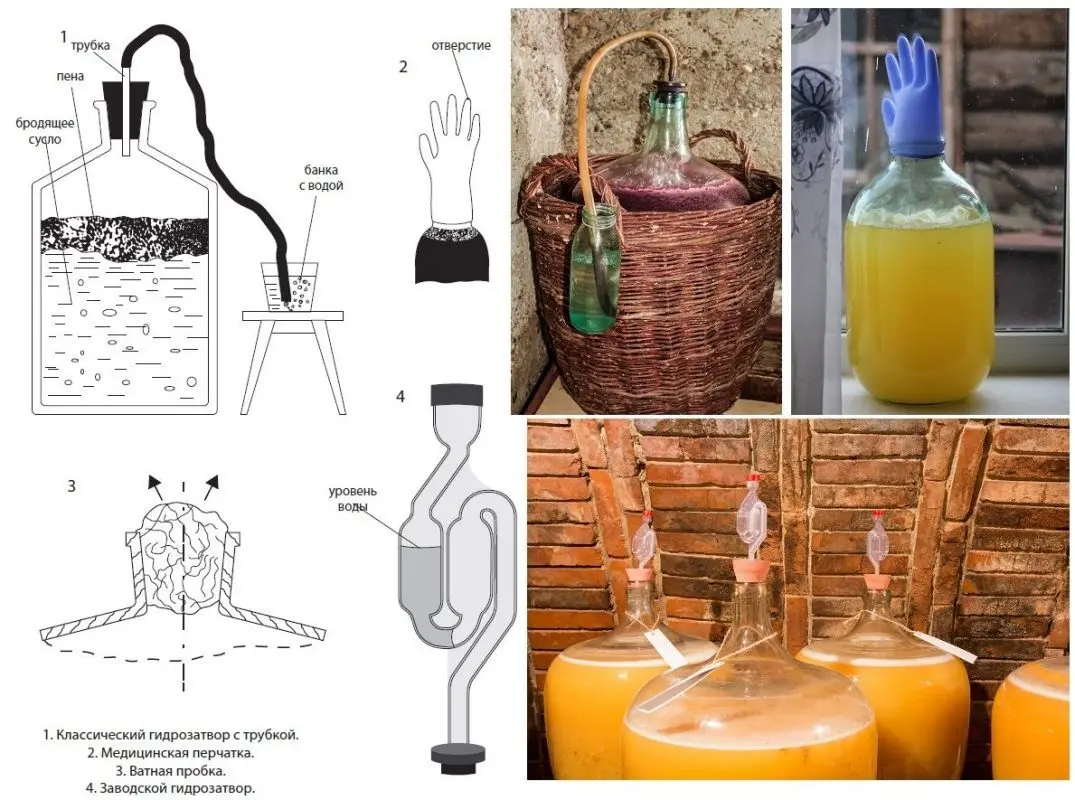
Depending on the yeast, temperature and amount of sugar, fermentation lasts 4-12 days. Signs of readiness for distillation: the water seal has stopped bubbling or the glove has deflated, the mash has become noticeably lighter than originally, the taste is bitter with a slight sourness, but without sweetness.
Getting moonshine from rye
5. First distillation
Filter the mash that has won back through gauze and pour into the distillation cube of the moonshine still. Without filtration, solid particles can burn when heated. Overtake the first time without division into fractions. Finish the process when the outlet strength in the jet falls below 25 degrees.
6. Preparation for fractional distillation
Measure the total strength of the resulting distillate. Calculate the amount of absolute alcohol: multiply the strength in degrees by the volume in liters and divide by 100. Dilute the moonshine with water to 18-20%.
Theoretically, at this stage, cleaning with coal or other methods (except for soda and potassium permanganate) is possible. But to preserve the rye flavor, I recommend refusing to clean it, since the second distillation will give excellent quality anyway.
7. Second distillation and finishing
Distill the diluted rye moonshine again with separation into fractions: collect the first 12-15% of the amount of absolutely alcohol (until an unpleasant smell is felt) separately. This is the “head” – a harmful fraction that contains dangerous impurities, you can not drink it.
Select the main product (called the “body”) until the strength in the jet drops below 42 degrees, then finish distillation or collect the “tails” in another container.
Dilute ready-made rye moonshine (“body”) with clean, high-quality water up to 40-45%, pour into glass containers and seal tightly. Let it stand for 2-3 days so that the reactions of mixing alcohol with water are completed, then the taste and aroma will noticeably improve.
